About
Our Story
A look into the history of Semester at Sea over nearly 100 years.
Introduction
The Spark
Nearly 100 years ago, the idea for a floating university that would travel the world became the passionate pursuit of James Edwin Lough, a psychology professor at New York University. He believed changes needed to be made to traditional teaching methods of American universities and soon became a leader in a new educational movement. Travel and first-hand experience, he felt, must be part of every scholar’s education, and he set out to find others who shared this vision.
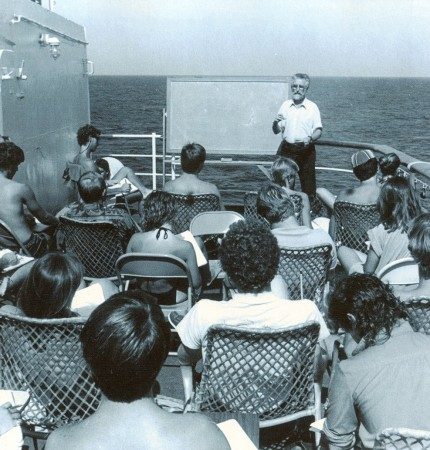
Semester at Sea History

The Maiden Voyage
One of Lough’s most significant counterparts was Constantine Raises, a Greek student who supported the effort and assisted with necessary academic and itinerary preparations. Although the program was successfully planned, enrollments fell short of expectations and the sailing was postponed for one year. Embarrassed, New York University dropped its sponsorship of the program, and James Lough took a leave of absence.
Despite the setback, Lough’s original vision eventually led to the successful maiden voyage of the SS Ryndam on September 18, 1926. Departing Hoboken, New Jersey with a capacity of 504 students and a faculty and administrative staff of 63, Lough sailed as Dean and Raises served as Voyage Director. Because the program was no longer sponsored by a single school, colleges and universities were eager to participate, and applications poured in.
It was an exciting sail. Imagine the glorious SS Ryndam decorated with flags from stem to stern, thousands lining the Fifth Street pier to see off their loved ones, and excited students waving from the decks. Many got so caught up in the spirit of the moment that they tried to book passage themselves! The students, representing 143 colleges, came from 40 states, as well as Canada, Cuba, and Hawaii. During the 7 1/2-month voyage, the ship covered 41,000 miles and visited 35 countries and more than 90 cities, including Shanghai, Hong Kong, Manila, Bangkok, Colombo, Bombay, Haifa, Venice, Gibraltar, Lisbon, and Oslo.
As the ship set sail, Lough tried to describe what lay ahead: “This shall not be a mere sightseeing tour, but a college year of educational travel and systematic study to develop an interest in foreign affairs, to train students to think in world terms, and to strengthen international understanding and good will.” Upon their arrival home and again years later at their 1976 reunion, the students aboard described the sailing as “the greatest educational experience of our lives.”
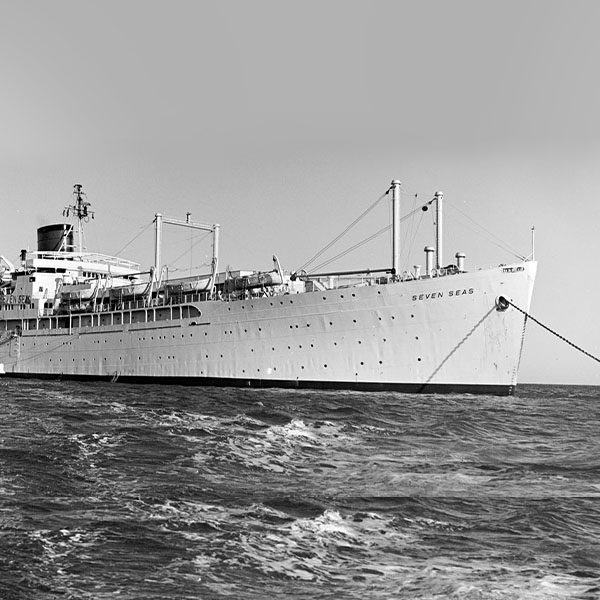
Gaining Momentum with the University of the Seven Seas
Although the voyage was a great success, the concept of shipboard education did not fully take hold until the 1960s when it was resurrected as the University of the Seven Seas by a visionary California businessman named Bill Hughes. In February 1963, a charter contract was signed with the same shipping company that had provided the SS Ryndam, Holland America, and preparations began to create the university aboard the MS Seven Seas.
Although the University of the Seven Seas was authorized by the state of California to issue transcripts and award diplomas, it was never fully accredited by the Western Association of Schools and Colleges. This prevented it from assuring students that their credits would be transferable to, or even recognized by, any other school. So in 1965, Hughes decided to affiliate with Chapman College in Orange, California who provided the program with academic credentials and the new life it needed as World Campus Afloat.
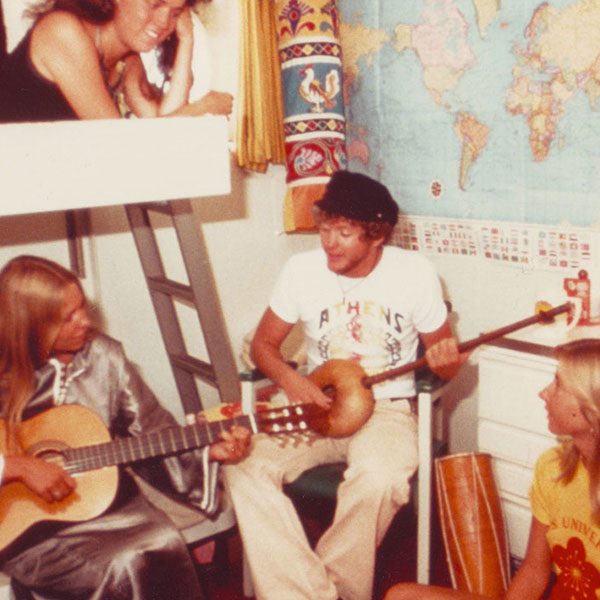
The 1960s and World Campus Afloat
In the late sixties, Dr. M.A. Griffiths, a professor of Middle Eastern history at Chapman, was named Dean and Academic Vice President (later Vice President of International Studies) and headed up World Campus Afloat. In 1969, Dr. Griffiths sent his associate, Dr. Lloyd Lewan, to travel as Dean on board the ship. This would be the first of many voyages for Dr. Lewan, who became Director of Operations and Associate Dean for the program. Dr. John Tymitz served at the time as Associate Director of Operations. In 1966, the Holland America Line exchanged the old Seven Seas for a new ship called the SS Ryndam, the same name as the original floating university. But in 1970, the Holland America Line went through a reorganization and withdrew its ship from the program.
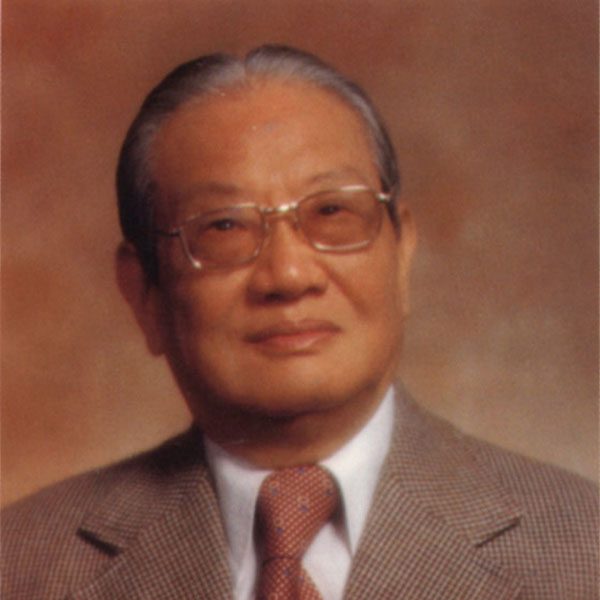
C.Y. Tung: A Shipping Mogul and Visionary
Enter C.Y. Tung of Hong Kong. This distinguished Chinese gentleman and shipping magnate had dreams of a United Nations university on a ship. He was fond of saying that “ships could transport more than cargo, they could carry ideas.” Through negotiations between Dr. Griffiths and Mr. Tung, an agreement was struck and C.Y. Tung provided World Campus Afloat with the ship and ship management expertise to launch the program into a new era. The first ship Mr. Tung provided was the Queen Elizabeth, sister ship to the Queen Mary, which he completely refurbished. Unfortunately, it was destroyed by a fire. But Mr. Tung kept his commitment and purchased another ship for the program. That ship was christened the SS Universe and would sail for many years to come.
A Ship could carry more than cargo, they could carry ideas.”
C.Y. Tung, Founder of the Institute for Shipboard Education
In 1976, Chapman College underwent financial problems, compounded by the oil crisis, and had to abandon World Campus Afloat. With the full support of C.Y. Tung, Dr. Griffiths left his tenured position and took the ship program with him. Mr. Tung and Dr. Griffiths then founded the Institute for Shipboard Education with Dr. Griffiths serving as Executive Director and Dr. John Tymitz second in command. Soon after, Dr. Lewan also joined the program. Working out of a small office in Laguna Hills, California, Dr. Griffiths and Dr. Tymitz moved boxes, licked stamps, recruited students, and searched for a sponsoring university. The University of Colorado was that university, enabling the program, now named Semester at Sea, to sail again, after only a one semester hiatus. Around this time, Dr. Griffiths also brought Dr. Max Brandt into the program, a man he called “a true internationalist.” This core team grew as the years went by into a strong ISE family comprising many.
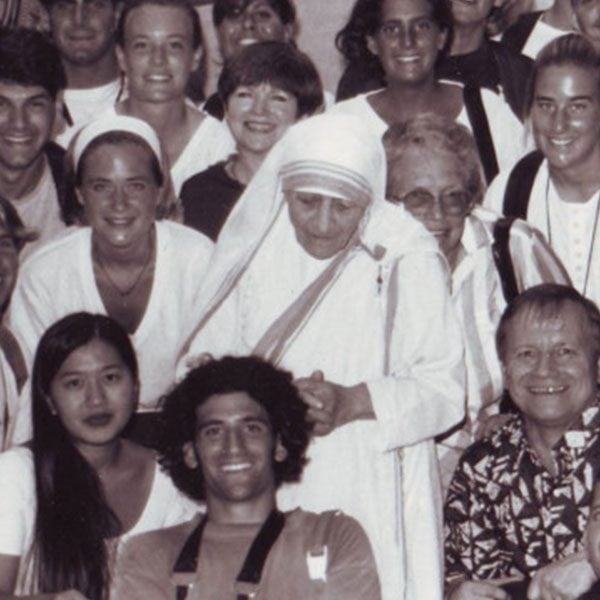
Pittsburgh Sponsors the Program
In 1981, the University of Pittsburgh took over the sponsorship of the program — a sponsorship that continued for 25 years. Dr. M.A. Griffiths retired in 1984 as Executive Director (though he continued for a number of years working in fundraising and alumni affairs). Dr. Tymitz was named the new Executive Director (later renamed as Chief Executive Officer) of ISE and ably led the program through many strong and exciting years until his retirement in 2007.
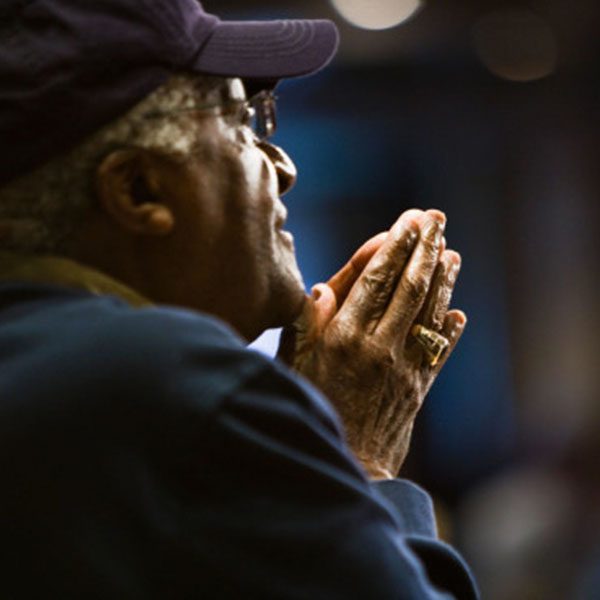
The University of Virginia
In 2006, the program found a new home and academic sponsor at the University of Virginia. With Dr. Les McCabe at the helm as the new leader of SAS, the program continued to thrive with the recent purchase of its floating college, the MV Explorer. Interestingly, in full circle fashion, Dr. McCabe had been originally hired as a young man 23 years earlier by Dr. Griffiths.
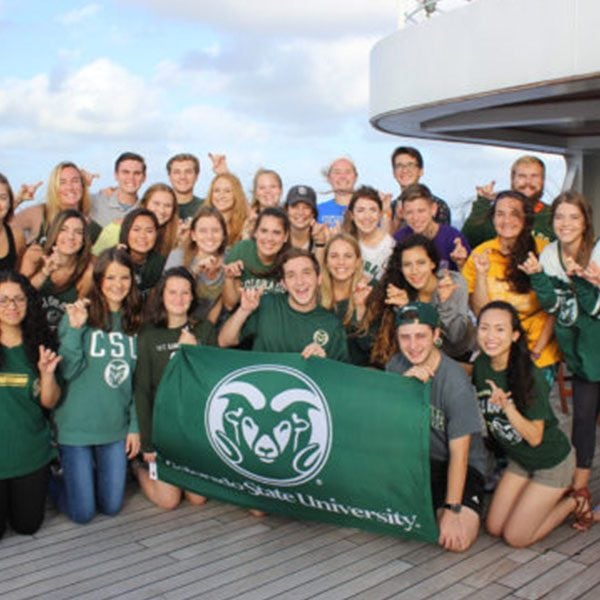
Colorado State University: An Ideal Academic Partner
Semester at Sea is proud to have Colorado State University (CSU) as our current academic partner. As of June 1, 2016, CSU became the new academic partner for Semester at Sea. Founded in 1870 as a land-grant institution, CSU combines intellectual classroom pursuits with hands-on experience in the field and laboratory — similar in approach to the Semester at Sea global comparative experiential learning model. CSU is a natural partner for SAS program due to the university’s role in the founding of the Peace Corps and its emphasis on the importance of diversity and global education. CSU also received the 2013 Senator Paul Simon National Award for Outstanding Campus Internationalization.
Milestones
Origins
1926
The first around-the-world voyage led by Prof. James Edwin Lough of New York University set sail: 504 students, 63 faculty, 7 1/2-month duration, 41,000 miles, 35 countries, and more than 90 cities.
1963
University World Cruise is not affiliated with Semester at Sea but may have inspired the first 1963 voyage.
Early Days
1960s
The concept of shipboard education fully took hold in the 1960s when it was resurrected as the University of the Seven Seas by a visionary California businessman named Bill Hughes.
February 1963
A charter contract is signed to create a university aboard the MS Seven Seas.
First voyage of the University of the Seven Seas sets sail: 275 students, 22 ports, 16 countries.
1965
Chapman College administers the program and changes the name to World Campus Afloat.
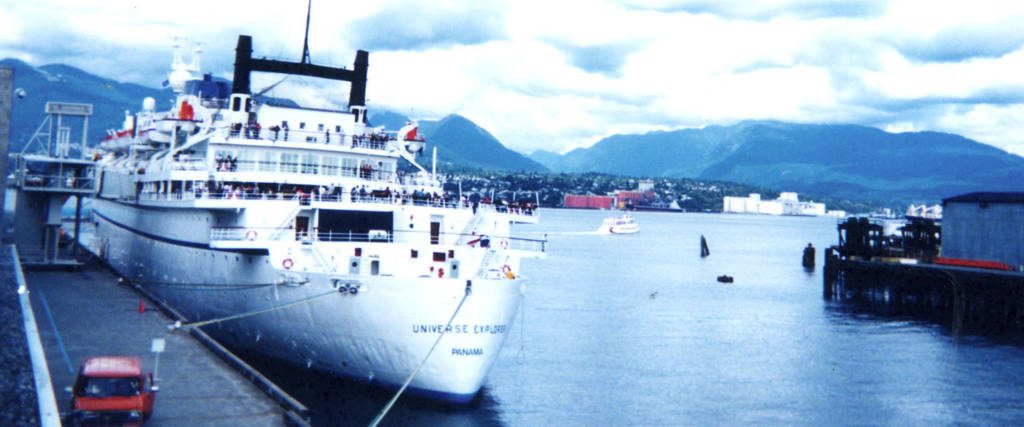
First Leaders
Dr. M.A. Griffiths, a professor at Chapman College, leads World Campus Afloat (WCA).
1966
Holland America Line (ship provider) exchanges the Seven Seas for the new SS Ryndam.
1969
Dr. Griffiths sends his associate, Dr. Lloyd Lewan, to travel as dean for several voyages.
Dr. John Tymitz serves as associate director of operations.
1970
Holland America Line undergoes a reorganization and withdraws its ship from the program.
1975
While docked in Hong Kong, 60 participants of the World Campus Afloat program were granted permission to visit Canton (Ghangzhou) in the People’s Republic of China. This was the first time U.S. citizens were allowed in the Communist ruled China under Chairman Mao.
Enter C.Y. Tung
C.Y. Tung, a Hong Kong business magnate, imagines a floating United Nations University. “Ships could transport more than cargo, they could carry ideas.”
Tung provides WCA with a ship and management expertise to launch shipboard education into a new era.
1971
The Queen Elizabeth I, is destroyed by fire in Hong Kong.
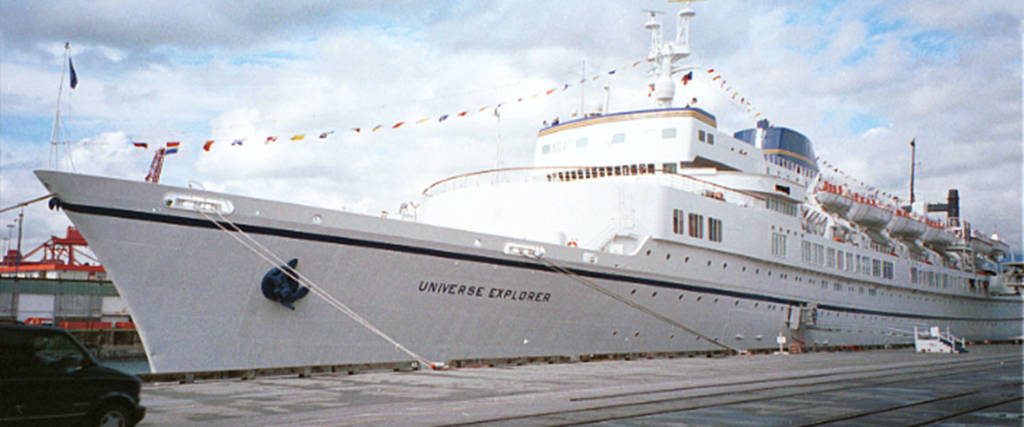
Finding a Home
1975
Compounded by the oil crisis, Chapman abandons World Campus Afloat.
1977
First Semester at Sea (SAS) voyage is launched aboard the SS Universe. The University of Colorado-Boulder is named academic sponsor.
1979
SAS takes 500 U.S. college students — largest in history — to mainland China and to Egypt to meet Egyptian President Anwar Sadat.
1981
The University of Pittsburgh assumes academic sponsorship.
1988
Students meet Presidents Mikhail Gorbachev (USSR) and Corazon Aquino (Philippines).
1992
ISE operates the first Seminar at Sea. Students meet 1979 Nobel Laureate Mother Teresa.
1994
SS Universe is the first ship of U.S. passengers to visit Vietnam after the U.S. embargo is lifted. Students meet Nobel Peace Prize recipient Nelson Mandela.
1997
Pete Peterson, first U.S. ambassador to Vietnam after the war, visits the ship three times.
1999
First voyage to visit Havana, Cuba.
2000
Cuban President Fidel Castro meets with students in Havana, first of several meetings with students in the program.
SAS conducts its first summer voyage.
2005
University of Virginia becomes new academic sponsor.
2007
ISE purchases MV Explorer.
Nobel Laureate Archbishop Desmond Tutu sails his first full SAS program on the Spring Voyage.
2008
First Leadership Forum on Global Affairs, a biannual four-day voyage examining international issues.
2009
Semester at Sea celebrates the 100th voyage. The MV Explorer receives ISO certification for environmental excellence.
2010
Nobel Laureate Archbishop Desmond Tutu sails on the entire Fall Voyage.
2015
A short-term lease is signed for the sixth traveling campus for Semester at Sea, the MV World Odyssey, and it is is unveiled prior to the Fall 2015 Voyage.
2016
Colorado State University becomes new academic partner.
2018
ISE secures a 10-year lease on the MV World Odyssey.
2023
In October 2023, ISE celebrated its’ 60th anniversary.